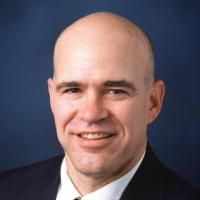Agricultural acceleration of soil carbonate weathering.
Date
2020-06-08
Journal Title
Journal ISSN
Volume Title
Repository Usage Stats
views
downloads
Citation Stats
Attention Stats
Abstract
Soil carbonates (i.e., soil inorganic carbon or SIC) represent more than a quarter of the terrestrial carbon pool and are often considered to be relatively stable, with fluxes significant only on geologic timescales. However, given the importance of climatic water balance on SIC accumulation, we tested the hypothesis that increased soil water storage and transport resulting from cultivation may enhance dissolution of SIC, altering their local stock at decadal time scales. We compared SIC storage to 7.3 m depth in eight sites, each having paired plots of native vegetation and rain-fed croplands, and half the sites having additional irrigated cropland plots. Rain-fed and irrigated croplands had 328 and 730 Mg C/ha less SIC storage, respectively, compared to their native vegetation (grassland or woodland) pairs, and irrigated croplands had 402 Mg C/ha less than their rain-fed pairs (P<0.0001). SIC contents were negatively correlated with estimated groundwater recharge, suggesting that dissolution and leaching may be responsible for SIC losses observed. Under croplands, the remaining SIC had more modern radiocarbon and a δ13 C composition that was closer to crop inputs than under native vegetation, suggesting that cultivation has led to faster turnover and incorporation of recent crop carbon into the SIC pool (P<0.0001). The losses occurred just 30-100 years after land-use changes, indicating SIC stocks that were stable for millennia can rapidly adjust to increased soil water flows. Large SIC losses (194-242 Mg C/ha) also occurred below 4.9 m deep under irrigated croplands, with SIC losses lagging behind the downward-advancing wetting front by ~30 years, suggesting that even deep SIC were affected. These observations suggest that the vertical distribution of SIC in dry ecosystems is dynamic on decadal timescales, highlighting its potential role as a carbon sink or source to be examined in the context of land use and climate change.
Type
Department
Description
Provenance
Citation
Permalink
Published Version (Please cite this version)
Publication Info
Kim, John H, Esteban G Jobbágy, Daniel D Richter, Susan E Trumbore and Robert B Jackson (2020). Agricultural acceleration of soil carbonate weathering. Global change biology. 10.1111/gcb.15207 Retrieved from https://hdl.handle.net/10161/21218.
This is constructed from limited available data and may be imprecise. To cite this article, please review & use the official citation provided by the journal.
Collections
Scholars@Duke

Daniel D. Richter
Richter’s research and teaching links soils with ecosystems and the wider environment, most recently Earth scientists’ Critical Zone. He focuses on how humanity is transforming Earth’s soils from natural to human-natural systems, specifically how land-uses alter soil processes and properties on time scales of decades, centuries, and millennia. Richter's book, Understanding Soil Change (Cambridge University Press), co-authored with his former PhD student Daniel Markewitz (Professor at University of Georgia), explores a legacy of soil change across the Southern Piedmont of North America, from the acidic soils of primary hardwood forests that covered the region until 1800, through the marked transformations affected by long-cultivated cotton, to contemporary soils of rapidly growing and intensively managed pine forests. Richter and colleagues work to expand the concept of soil as the full biogeochemical weathering system of the Earth’s crust, ie, the Earth’s belowground Critical Zone, which can be tens of meters deep. The research examines decadal to millennial changes in the chemistry and cycling of soil C, N, P, Ca, K, Mg, and trace elements B, Fe, Mn, Cu, Be, Zr, and Zn across full soil profiles as deep at 30-m. Since 1988, Richter has worked at and directed the Long-Term Calhoun Soil-Ecosystem Experiment (LTSE) in the Piedmont of South Carolina, a collaborative study with the USDA Forest Service that quantifies how soils form as natural bodies and are transformed by human action, and a study that has grown to become an international model for such long-term soil and ecosystem studies. In 2005, Richter and students initiated the first comprehensive international inventory project of the world’s LTSEs, using an advanced-format website that has networked metadata from 250 LTSEs. The LTSEs project has held three workshops at Duke University, NCSU's Center for Environmental Farming Systems, and the USDA Forest Service's Calhoun Experimental Forest and Coweeta Hydrologic Laboratory, hosting representatives from Africa, Asia, Australia, Europe, and the Americas. Richter's 60-year old Long Term Calhoun Soil and Ecosystem Experiment is linked to similar experiments and platforms around the world via the ‘Long-Term Soil-Ecosystem Experiments Global Inventory’, assembled by Dan Richter, Pete Smith, and Mike Hofmockel."He is an active member of the International Commission on Stratigraphy’s Working Group on the Anthropocene. Richter has written in the peer-reviewed literature about all of these projects, and in November 2014 his soils research at the Calhoun and his soils teaching were featured in Science magazine.
Unless otherwise indicated, scholarly articles published by Duke faculty members are made available here with a CC-BY-NC (Creative Commons Attribution Non-Commercial) license, as enabled by the Duke Open Access Policy. If you wish to use the materials in ways not already permitted under CC-BY-NC, please consult the copyright owner. Other materials are made available here through the author’s grant of a non-exclusive license to make their work openly accessible.
